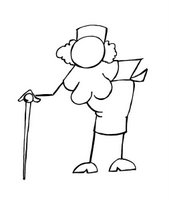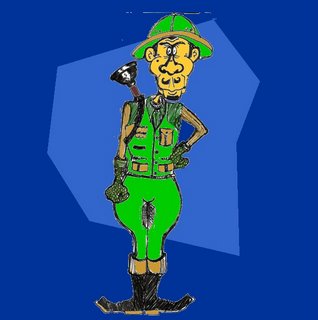
Day Two The Adventure Continues
I am writing the following day, having come back to my room after dinner and doing nothing but watch Borat. I used a free video voucher I got when my TV didn’t work the night before and had to move to another room. Not the kind of movie you want to snuggle up with your family and a bowl of popcorn on the couch…just another benefit of the Baymont Resort, just nanoseconds from I-35 in Austin.
I decided to go in late today and catch up on commitments – including this one.
The day was a full one. The International Alliance for Learning (IAL) embraces Accelerated Learning (AL) as key to our transition from an industrial to knowledge to a creative economy and from a national to a global community. In many ways,
- Knowledge about the Human Brain
- Emotional State
- The Learning Environment
- The Role of Music and the Arts
- Personal Motivation
- Multiple Intelligences and Learning Styles
- Imagination/Metaphors
- Suggestion/De-Suggestion
- Team Learning and Cooperation
- Improvement and Results
If you haven’t spent time with these elements in your work you can find the details at:
http://www.ialearn.org/ALElements.php
Workshops at this conference address primary education to adult-corporate to seniors. Content covers the entire human body or system from the physical to the emotional to the intellectual. What is stressed most in these workshops is all three are to be given consideration. One excellent point that came out of one of the sessions I attended was,
If you overdevelop one area in the system (that would be you and the rest of the human race) you will imbalance this system and destroy the synergy we are capable of experiencing.
In other words being muscle bound in one area decreases the power of everything. It’s not that you lose 2/3 of your capabilities by over strengthening 1/3, rather there is an exponential negative effect. Very cool.
I attended three sessions:
Opening Session
You probably know the normal things that go on at a conference opening (I will save blog space by not going into detail). What was a complete WOW was a group of children from Central and South America who have come to our country just 3 months ago not knowing a stitch of English. They are as a result of Accelerated Learning practices and are today able to fluently speak English. They demonstrated their abilities by given speeches and performing songs, and talking with the audience after the session. WOW.
Teaching to the Brain's Natural Learning Systems
The first program I attended was given by Barbara Givens, from George Mason University. She presented the five major neurobioloical systems that affect our lives:
- Emotional
- Social
- Cognitive
- Physical
- Reflective
She did a great job at framing the value of these systems in making us who we are. Some notable points that I found amazing:
The percentage of Nature versus Nurture as it influences our development is quite different from my knowledge of the past. Barbara told us that Nature comprises 30% and Nurture is 70%. New findings and realizations have made this possible. Most of the nurture influence she described was during the gestation of a baby. Factors such as alcohol and stress can negatively affect the environment from which a baby develops. This is nurture - a controllable, non-genetic circumstance that can be controlled for the benefit of early childhood development - very early. Very cool.
There is a chain of occurences that ultimately result in the release of positive chemicals in our brain, which is the source of our contentment and well-being. As we go through life we try on many masks. This is not the Artist's Way, but rather a journey we all must go through. The purpose is to find our passion - a much maligned term that conjures up all kind of nightmares that tell us, and others who care about us, that eventually we will end up in some cult, drinking kool aid and contemplating our belly buttons. On the contrary, passion, a positive emotional reaction that is unique to the individual, drives positive chemicals in the brain which drive higher productivity - not a crisis that becomes the subject of a "made-for-TV movie."
I am enthralled with the study of the brain and our ability to use and develop it for our use. Her manner of presentation was conversational and inviting. I took alot from the event.
Business Doesn't Mean Boring! Kick Up Your Visuals a Notch
Jenny Maddern, UK, is a dyamic, energetic consultant who uses AL concepts in training and development. Her approach to creating a visual environment is simple and effective. She shared ideas on using visuals to frame a program, ways to create posters with simple methods, using visuals to facilitate an event and collect information. Very practical, very effective - very valuable. When I was a magician the rule of thumb when doing shows where we had to set up nd take down and move to another location and do it again was "packs small and plays big". This is the magic Jenny provided us.
It is very hard to describe visual when using textual. If you want to really see what it is all about check out her website: www.discoverylearning.co.uk.
AL Outside the Classroom: Applications and other Settings
This program is an AL certified session where Sarah Spengler, one of Clevesburg's own, walked us through the various techniques that can be used to collect information, understand other's vantage points, and other concepts that espouse the AL method. We broke into teams to work on an assortment of issues, crafting potential solutions and questions for clarification. We moved again to visit issues we did not originate to fill in gaps in thinking.
This was an excellent program and tied the learning together into a cohesive whole. The only thing that would make it better would be to hold it earlier in the day. I think we were all burned out.
This was the end of my day, though there was more that occurred in the evening. I was beginning to notice my attention lagging having moved from room to room, without other diversions. The spirit is willing - I visuallize being engaged intellectually all day, but the actual ability to do so found me wanting. Just another learning moment.
+of+pix+IAL+3c+attendees+power+of+pen.jpg)

+of+pix+IAL+3c+marilyn.jpg)
+of+pix+IAL+3c+Elsie.jpg)





